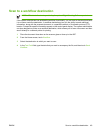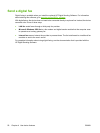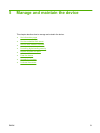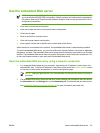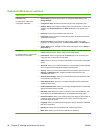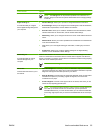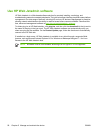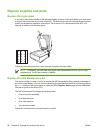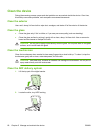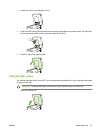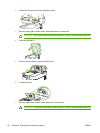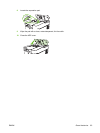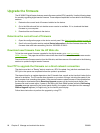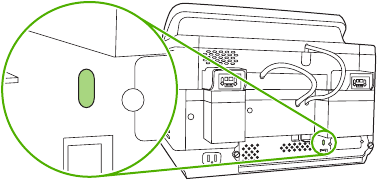
Controlling digital-sending security
The digital sender has been designed with security in mind. It includes a variety of features that work to
protect the security of the digital-sending process.
Network authentication
The digital sender's most basic security feature is its ability to require a network login before a user can
use the digital sending functions. This prevents unauthorized users from walking up to the device and
sending documents. Additionally, the digital sender supports several authentication methods that offer
a high level of encryption and security.
Secure e-mail
A number of third-party software vendors offer services for secure e-mail delivery. The Secondary e-
mail feature is designed to work with one of these third-party software programs for users that require
an extra measure of data security. For more information, see the DSS support guide.
Restrict software access
In order to keep the digital sender secure, you must also restrict access to the software programs that
can be used to configure the device. By default, the digital-sending configuration options in the
embedded Web server (EWS) are disabled when the digital sender begins using the HP DSS service.
The digital sender can then only be configured by using the HP MFP DSS Configuration Utility. This
centralizes configuration tasks and helps control security. You should make sure that the HP DSS is
installed on a secure server and that the HP MFP DSS Configuration Utility cannot be used by
unauthorized users.
In addition, you can also set a password in EWS to prevent access to the device-settings tabs. After the
password has been set, users can only see the EWS Information tab. For more information about the
Security page, see the embedded Web server guide on the device CD.
The final software program that can be used to control the digital sender is the HP Web Jetadmin
program. This program can also be configured to require a password before any changes can be made.
It should also be installed on a secure server and should be protected from unauthorized use.
Security lock
The security lock is a mechanical lock that prevents the removal of internal device components. The
lock used is a third-party computer lock such as the ones that are used to secure laptop computers.
Purchase the lock separately, and then install it on the device in the location shown in this figure.
ENWW Controlling digital-sending security 57



